MARKET OVERVIEW
The Global Biopesticide Market is a vast arena for biological control solutions to fight insects, weeds, fungi, and the likes of agricultural pests. Pest control other products use different modes of action including microbial activity, biochemical disruption, and predation. Generally, however, biopesticides do not affect beneficial insects, soil microorganisms, or the ecosystem involved, which is one of the critical distinctions from conventional pesticides. Continued experimentation along the tenets of this positive discrimination is bound to attract the attention of farmers, researchers, and policymakers' intent upon efficient pest control mechanisms on the environmentally friendly alternative.
The segment of the agricultural economy that discusses the development and application of pest controls from naturally derived products is what constitutes the Global Biopesticide Market. As the agricultural sector has been rapidly developing, the need for sustainable methods of crop protection and environmental consideration will also be the governing factors for this market. Biopesticides gain emergence from the use of living organisms, extracts from plants, and natural substances and can be put in place as alternatives for chemical-based pesticides. Due to various restrictions on soil health, biodiversity, and resistance to chemicals, biopesticides would fit better into modern-day alternative strategies for agriculture.
As agricultural mosaics become different, biopesticide compositions will also be diversified to deal with different crop types, climatic conditions, and pest pressures. The Global Biopesticide Market will cater to the requirements of both large-scale commercial farming and smallholder and organic producers. Research will focus on optimizing the formulations for stability, efficacy, and ease of application. Compatibility with current farming needs and integration with modern precision agriculture will be the driving force behind product development.
There will be government regulations and policies in place that will affect the Global Biopesticide Market in product approval and commercialization schemes. Biopesticides, on the other hand, are more often subjected to different regulatory scrutiny vis-a-vis their synthetic counterparts due to their biological nature. Governments and international agricultural bodies shall be looking at refining guidelines on efficacy testing, safety assessment, and market authorization for biopesticides. As compliance frameworks to address emerging challenges change, manufacturers and stakeholders in agriculture will adjust their approaches.
Biotechnology and microbiology advancements will truly open opportunities for the Global Biopesticides Market. Genetic studies will help to achieve the efficient use of microbial strains, enabling enhanced pest resistance and long-lasting formulations. The search for newer plant-borne agents/biochemicals will widen the availability of biopesticides. As the scientific developments go on, this market will see the birth of next-generation products having even more precision and reliability in pest control.
When it comes to different agricultural regions, supply chain dynamics will decide the availability of biopesticides. Some of the factors influencing market penetration include the investment into production infrastructure and distributions, as well as farmers' training programs. Such activities will depend a lot on the collaborations formed by research institutes, agricultural bodies, and biopesticide manufacturers, facilitating knowledge-sharing avenues for driving common acceptance.
The need for safer, targeted pest control solutions placed the Global Biopesticides Market as a priority in sustainable farming. As farming systems adapt to environmental challenges and regulatory expectations will come to the fore, the biopesticides will remain a key measure in the attainment of productive and resilient crop production.
Global Biopesticide market is estimated to reach $21,601.7 Million by 2032; growing at a CAGR of 16.1% from 2025 to 2032.
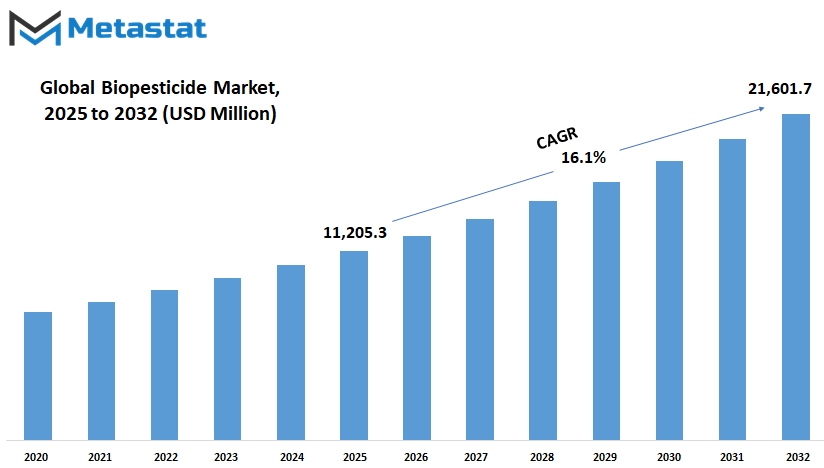
GROWTH FACTORS
The Global Biopesticide Market is likely to rise because of client shifts towards adopting organic and sustainable agricultural practices. People becoming more aware of what they are eating brings the increasing demand for wares that are produced without harmful chemicals. Presently, farmers and agricultural businesses are going under great pressure to adopt alternatives for synthetic pesticides because the regulations keep tightening their use. All these covet biopesticides for they are a natural and environmentally benign pest control solution.
One main reason biopesticides are gaining momentum today is their promise of diminishing environmental detriments by nearly putting away old methods of farming. Biopesticides are derived from living organisms like bacteria, fungi, and plant extracts; they do not carry harmful residues with them into the soil and water unlike synthetic pesticides. Instead, they maintain soil health along with biodiversity, thus leaning towards farmers adopting sustainable practices. Nevertheless, their benefits considered, not all is rosy. Some biopesticides are less potent against some pests compared to their chemical counterparts, which makes farmers tend to be on the opposite side of the full transition. The other aspect is that developing these products takes a lot of time and investment, which ends in a very high production cost that could affect their affordability.
These obstacles notwithstanding, the advances in biotechnology should somewhat be able to push forward the Global Biopesticide market. Researchers and companies are working on deriving new combinations that will improve the efficacy of biopesticides, ensuring reliable and consistent pest control. The improvements to these products will also result from the innovations in their delivery systems such as microencapsulation and slow-releases technology. Increasing investment toward research and development will make biopesticides more adaptable to different crops and pests.
Consistent with the change, the increasing demand for sustainable agricultural solutions has also encouraged governments and regulatory authorities to advocate biopesticide development. More countries are giving incentives to farmers for adopting eco-friendly pest control methods, thereby increasing the market potential. At the moment, there are partnerships between agricultural companies and research institutions that propel them toward the development of more effective and cost-efficient products. Such collaborative ventures would pay attention to the limitations of biopesticides at present, allowing them to become more relevant to large-scale farming operations.
The future for the Global Biopesticide market will only be brighter as the performance of products is enhanced by technology and scientific progress. Due to increasing awareness about environmental sustainability and health issues concerning synthetic pesticides, the demand for biopesticides will rise. Therefore, companies that invest in research and innovation will establish themselves to capture growing opportunities in the market.
MARKET SEGMENTATION
By Type
As long as biopesticide is concerned, it is all set to grow because industries are taken towards sustainable agricultural practices. Exposure around food and chemical contamination is increasing, and so is the effect on the environment; this inquiry for less aggressive alternatives to conventionally used pesticides by farmers and producers will certainly heighten. The Global Biopesticide market is predicted to flourish as countries across continents begin putting legislations in place for the facilitation of environmentally friendly pest control solutions. All these things will work to get companies into natural as well as biological formulations to work with pesticides in manageable amounts while at the same time, keeping the ecology less interfered with.
Innovations in biopesticides will produce advances in efficacy and the ease of use offered by them. Further research on microbial and plant-based solutions is expected to result in development of pest control methods that become more specific and reduce dependence on synthetic chemicals altogether. New formulations will also provide long-lasting protection due to continuing improvements in biotechnology, making them more enticing to large agribusinesses. Then, as agricultural technology progresses, there will be more integration of biopesticides with precision farming techniques for efficient application with better results.
The Global Biopesticide market includes different markets offering varieties of products, which are each significant in modern agriculture. Bioinsecticides gain importance because they can control pests without harming beneficial ones. Such solutions are going to become even more precise for targeting certain pests. Biofungicides will continue to be a fundamental element for defining fungal diseases for crops, but much would be accomplished in future developments in their environmental resistance. While soil bioherbicides will increase in use because they are becoming a way of doling out soil dwelling plant pests in environmentally friendly manners, bioherbicides-an alternative natural cure to chemical herbicides-will be perfected and made available for effective weed control without compromising surrounding crop performance. Further, other divides of biopesticides which include multi-benefit types will expand further as companies think about new methods to strengthen plant protection.
With the growing interest in sustainable farming, companies will have to sustain their competitiveness by undertaking research and development. Smarter solutions should be included, like those that will adapt to changing environmental conditions among the features that will be found in the products introduced to the future of Global Biopesticide markets. Increased consumer awareness about their rights will definitely increase the use of naturally derived pest control measures.
This would push manufacturers to develop products that take into consideration effectiveness versus sustainability. How much the industry continues to transform to more environmentally friendly practices will be the shaping force for this industry, turning biopesticides into an essential part of agricultural practices worldwide.
By Crop Type
Given the push from the agricultural industry toward sustainability and eco-friendliness, the demand for biopesticides is set to grow. Farmers now want safer alternatives for pest control due to concerns over chemical pesticide residues that may harm the environment and human health. The Global Biopesticide market is set to grow, thanks to advances in biotechnology that continually develop solutions better able to target specific pests while conserving useful organisms. This research into microbial and botanical-based pesticides will give farmers more tools for managing threats to their crops in a way that is least damaging to soil quality and biodiversity.
Different types of crops would most likely demand specialized biopesticides in ensuring that farmers are provided with solutions targeting their specific agricultural needs. There will be a strong demand in the market for cereals and grains, with farmers wanting solutions for a long-lasting resistance toward pests without risking soil fertility. Oilseeds and pulses will benefit from biopesticides that enhance plant resilience and yield and, in that way, decrease the use of synthetic chemicals. For fruits and vegetables-where chemical residues can often become an issue-biopesticides will play an important role in providing cleaner produce according to consumer choice. Other crops will start to pick up as farmers realize the long-term benefit of natural pest control.
The research and development would lead to the formulations being better and more effective within a variety of conditions as the Global Biopesticide market evolves. Biopesticide development is ever further enhanced by advances in fermentation technology and genetic engineering, and these will lead to the design of improved stability and user-friendly biopesticides, which can be readily adopted into widespread farming practice. Hence, these will benefit farmers with solutions that not only safeguard their crops but also promote soil health by increasing the population of beneficial microorganisms. This transition will contribute to the sustainability of agriculture and help farmers to maintain productivity while minimizing environmental impacts.
The future of the industry will equally be determined by technological advancement and more regulatory approval. As governments promote the reduction of chemical pesticides, biopesticides will become a key component of pest management programs. Companies will look into maximizing shelf life, applications, and efficacy to make ease of adoption for farmers. Together with regulators, stakeholders, collaborators, and scientific entities, biopesticides will find the space to expand into acceptable markets, where they will become standard fare for farming communities.
By Source
There is, in fact, no doubt that the Global Biopesticides market will keep growing as the demand for more sustainable agriculture rises. Increasingly, biopesticides are coming under the spotlight as solutions with an environmentally friendly way to protect crops, against the backdrop of a growing focus on reduced chemical pesticide use. Absorbing these natural varieties will be a path that farmers and agricultural companies will tread in order to enhance crop production while sparing losses to beneficial insects, soil quality, or water sources. Food safety mobilization will contribute to even wider adoption of biopesticides, which will in turn shape the future of pest control.
The market continues to tip on innovative solutions from research and manufacture towards better pest resistance while improving soil health. Companies pursue various alternatives in the quest to create more effective biopesticides that ensure reliability across various climates, as well as crop types. Development of products that would protect them longer and give quicker results will be a major booster of their popularity. With advancements in biotechnology, it is expected that more efficient formulations could also be available shortly, thus improving on the limitations of conventional chemical pesticides.
By source, this market is divided into microbial pesticides, biochemical pesticides, and plant-incorporated protectants. Out of these three sources, microbial pesticides derived from bacteria, fungi, and viruses would emerge to be popular in future applications due to their targeted action against pests and innocuousness on beneficial other organisms. Further discovery could yield better protection from these new microbial strains against a larger number of pests. Biochemical pesticides derived from natural compounds such as insect pheromones and plant extracts will probably also receive and enjoy increasing acceptance. These products do not kill but alter pest behavior and thus are safer to both the famer as well as the environment.
Plant-incorporated protectants will be an increasingly important market segment in the future, as they are genetically engineered into crops to offer pest resistance "built in." Genetic advances will probably lead to the evolution of crops that can autonomously defend themselves from pests, thereby eliminating the requirement for external applications. Not only would this cut costs for farmers, but it would also keep the entire practice sustainable.
With increasing reports and concerns of residues of pesticides and existing environmental impacts, the biopesticide revolution will be buoyed and supported more by governments and regulatory bodies. Policies favoring natural substitutes would boost investments into research development, thus innovating the industries. This will most likely combine scientific advancements and the global push for safer agricultural solutions to ensure that biopesticides will inevitably be found in modern farming.
By Application
The demand will continue to rise: a clear indication of changing trends for agriculture-from using chemical pesticides towards safer and more sustainable solutions. Concerns about the harmful effects of chemical pesticides on human health and the environment have led farmers and agricultural businesses to turn away from such chemicals. Innovations and research will lead to more effective products for use in the Global Biopesticide market, providing strong protection for crops without damaging soils or ecosystems in the long term. Consumer awareness about food safety will ignite further push towards biopesticide-inclusive farming practices, thus reinforcing their pace in agriculture today.
One of the growing issues that would affect the biopesticide industry positively would be the increasing need for insect control. It means that farmers have to use insecticides that destroy their intended target yet allow the existence of beneficial insects such as pollinators to thrive. Biopesticide from bacteria, fungi, plant extracts will take on serious life in keeping the crops from infestation. Development of products aimed for the growing resistance of pests against the use of traditional pesticides has secured farmers an alternative after such time before using them.
Another concern will be weed control as farmers find their production areas invaded with wild plants robbing their yield. Conventional herbicides gain attention because of their danger posed to soil health and contamination of water sources. To this end, biopesticides are crucial options for long-term sustainability. Biological herbicides would be possible options for managing unwanted plant growth to generate crop valuable produce with zero harmful residues.
Plant disease control is another area that will benefit from advancements as biopesticides are built to strengthen crops against infection. The product would benefit farmers using naturally occurring microorganisms to prevent fungal, bacterial, and viral diseases. Such a product is expected to reduce the need for synthetic fungicides with overall plant fitness increased, resulting in improved yields and quality of produce.
Apart from direct pest and disease management, biopesticides will also be used in the area of plant growth regulation. It will help the plants grow healthier by maximizing nutrient absorptions and improving their survival against environmental stresses. Increasingly unpredictable climatic conditions will call for more and plant-strengthening solutions in the future.
The Global Biopesticide market will keep evolving for the simple reason that advancements in science pave ways for increasingly improved products, as well as their wider availability. With studies continuing and the push from consumers for organic free produce being sharper, biopesticides are bound to gain consensus within the agricultural sector. Farmers and agribusinesses will willingly adopt these solutions to ensure crop productivity improvement within a healthier environment for future generations.
|
Forecast Period |
2025-2032 |
|
Market Size in 2025 |
$11,205.3 million |
|
Market Size by 2032 |
$21,601.7 Million |
|
Growth Rate from 2025 to 2032 |
16.1% |
|
Base Year |
2024 |
|
Regions Covered |
North America, Europe, Asia-Pacific, South America, Middle East & Africa |
REGIONAL ANALYSIS
As agriculture moves toward sustainability and ecological soundness, this trend would keep driving the demand for biopesticides. Farmers and agricultural enterprises are on the lookout for safe pest controls in response to growing concerns regarding soil health, food safety, and adverse effects on the environment. The momentum toward biopesticides shows signs of developing, as these are derived from natural sources such as bacteria, fungi, and plant extracts. Pest management is eco-friendly since it diminishes the negative effects of the products on the environment, non-target organisms, and humans. With more stricter regulations for chemical pesticides, the adoption of biopesticides would continue to grow around the world.
North America will remain a giant in the market, with the United States, Canada, and Mexico promoting sustainable farming practices. It has become an important region with research and development initiatives, government support for biopesticides, and the awareness of farmers regarding these products. The growing demand for organic food will continue to drive innovation in North America. Europe is equally determined to reduce the use of chemical pesticides, with countries such as the UK, Germany, France, and Italy advocating policies that promote ecologically sound pest control strategies. This paradigm shift in organic farming and integrated pest management will serve as a growth wound for biopesticides in the region.
Asia-Pacific will also be a significant driver for the future of this market. Countries like India and China, having their large agricultural sectors, are looking for best practices to strike a balance between generating high crop yields and sustainable practices. Meanwhile, governments in the region are coming up with initiatives to foster biopesticides for environmental benefits. Japan and South Korea are also emphasizing their advanced agricultural technologies to push the market further. This is promising for the expansion of biopesticide use as farmers in Asia have become increasingly aware of alternatives to synthetic chemicals that won't break their bank.
In South America, Brazil and Argentina are the key countries driving biopesticide demand. Sustainable pest management is essential for this region, given the extensive agricultural environment and the heavy reliance on exportation. Farmers are increasingly recognizing the long-term advantages of natural solutions and, consequently, the usage of these solutions is on the rise. In the meantime, the Middle East & Africa region is showing some promise, with countries such as South Africa, Egypt, and the GCC making strides towards a modern agricultural sector. Water scarcity and extraneous weather conditions make good sustainable pest control methods even more valuable to farmers in this section.
The biopesticide market will continue growing worldwide due to awareness creation; technological advancement; and the enabling environment created by governments. These regional efforts towards the adoption of natural pest control methods will further shape the industry into one that supports agriculture that is highly productive and environmentally responsible.
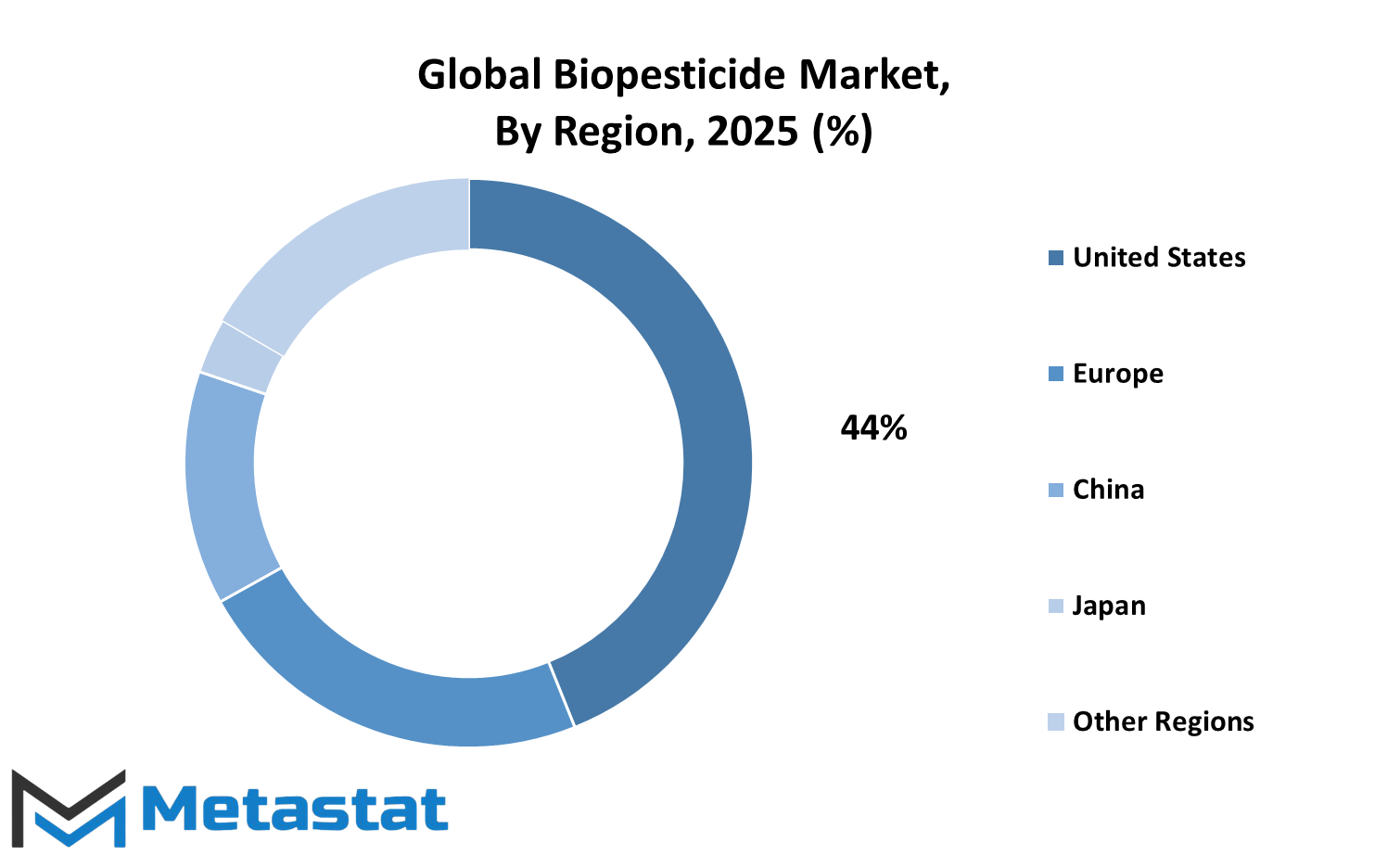
COMPETITIVE PLAYERS
The increasing emphasis on sustainable farming practices and limited use of agrochemicals will propel the demand for biopesticides in the near future. With consumers becoming more aware of food safety and environmental issues, farmers and agriculture companies are moving toward biological solutions that provide effective pest control without disrupting ecosystems. The Global Biopesticide market is poised for growth due to advances in biotechnology, along with the requirement for environmentally sound alternatives to conventional pesticides. As more stringent regulations on synthetic chemicals are introduced, this business will further develop with solutions that enhance yield while keeping the soil healthy.
Innovation in this industry will promote the design and manufacture of biopesticides that would be sufficiently efficacious and target-specific. Microbial-based products that confer long-lasting protection against pests without interfering with beneficial insects are being developed. The companies are also testing genetically-enhanced microorganisms and plant extracts that reinforce crops against diseases. As agriculture technology continues to improve, biopesticides will be more integrated with precision farming technologies to guarantee their application is optimally timed and placed for maximum efficacy.
The Global Biopesticide market will witness increase in competition as companies all over unleash those most efficient and most sustainable solutions to agriculture. Established firms such as Valent BioSciences, Certis USA, BASF, and Bayer have all earned their stripes in the industry and will now be continuing to pour resources into R&D. Others are companies like Isagro, Neudorff, and Bioworks that seek to expand their existing lines to different crop types and climatic zones. As governments around the world embrace organic farming, businesses such as Koppert, UPL, and Vegalab S.A. will start to release new biopesticide formulations which thus satisfy the shifting paradigms in modern agriculture.
Smaller players and target-orientated companies fill the shoes to influence market dynamics. For Andermatt Group AG, Biobest Group NV, and BIONEMA, development for niche markets of highly specific biopesticide solutions is ongoing. Meanwhile, agribusiness institutes such as Corteva Agriscience, FMC Corporation, and Nufarm will expand their biological product portfolio offerings to meet the demand. Besides, companies among Henan Jiyuan Baiyun Industry Co Ltd, IPL Biologicals Limited, Lallemand Inc, and Novozymes will likely hold the key to bringing forth the development of innovative bio-based pest control's solutions to usher farmers into sustainable practices.
Technological advances will make way for more advanced biopesticides with higher efficiency and little environmental effect. Fast development of formulations offering longer acting and more resistant to adverse conditions would also be another trend shaping the industry.
Biopesticide Market Key Segments:
By Type
- Bioinsecticides
- Biofungicides
- Bionematicides
- Bioherbicides
- Other Types
By Crop Type
- Cereals & Grains
- Oil Seeds & Pulses
- Fruits & Vegetables
- Other Crop Types
By Source
- Microbial Pesticides
- Biochemical Pesticides
- Plant-Incorporated-Protectants
By Application
- Insect Control
- Weed Control
- Plant Disease Control
- Others (Growth Regulators)
Key Global Biopesticide Industry Players
- Valent BioSciences
- Certis USA
- BASF
- Bayer
- Isagro
- Neudorff
- Bioworks
- Koppert
- UPL
- Vegalab S.A
- Andermatt Group AG
- Biobest Group NV
- BIONEMA
- Corteva Agriscience
- FMC Corporation
- Nufarm
- Henan Jiyuan Baiyun Industry Co Ltd
- IPL Biologicals Limited
- Lallemand Inc
- Novozymes
WHAT REPORT PROVIDES
- Full in-depth analysis of the parent Industry
- Important changes in market and its dynamics
- Segmentation details of the market
- Former, on-going, and projected market analysis in terms of volume and value
- Assessment of niche industry developments
- Market share analysis
- Key strategies of major players
- Emerging segments and regional growth potential



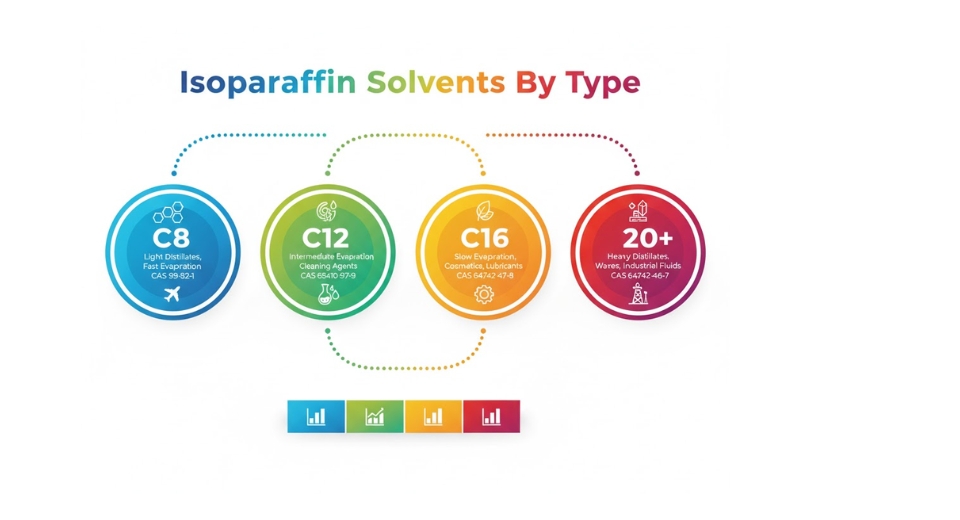
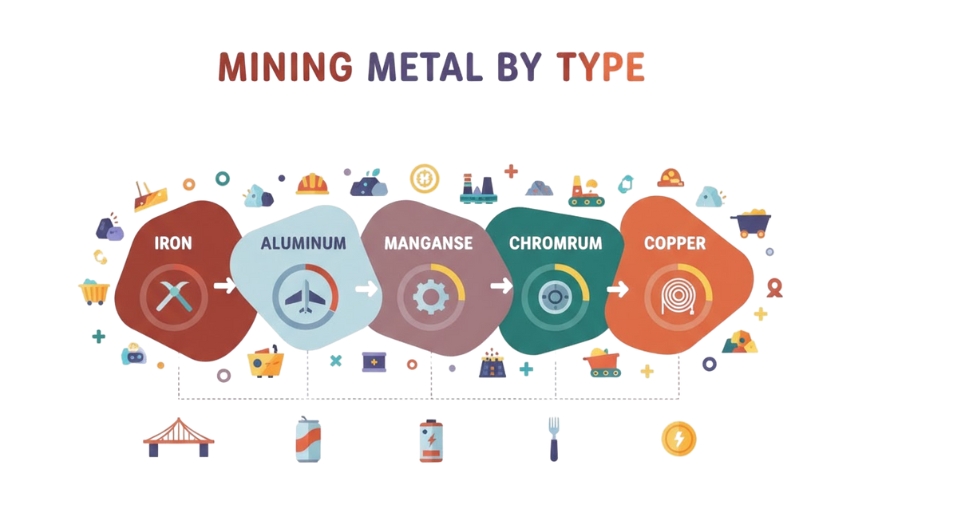
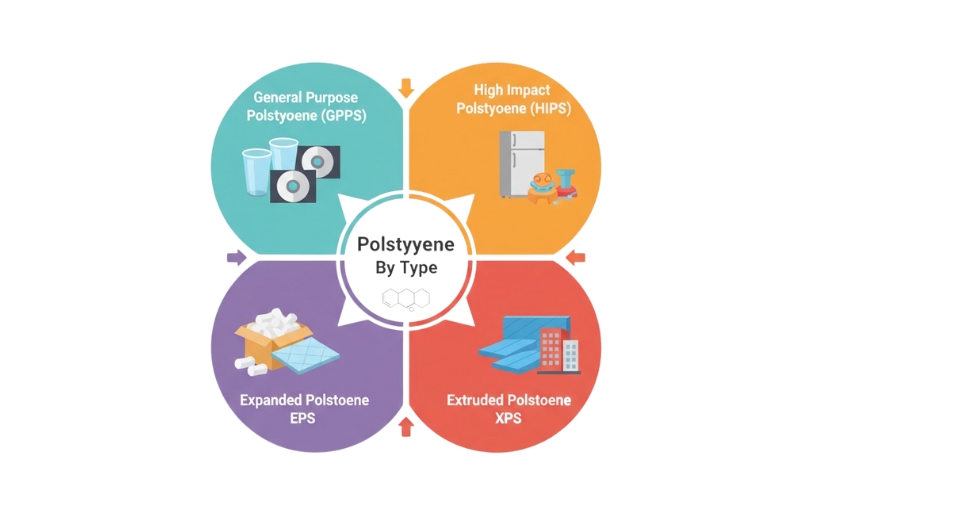

 US: +1 3023308252
US: +1 3023308252






